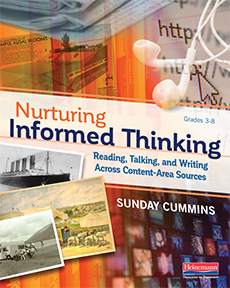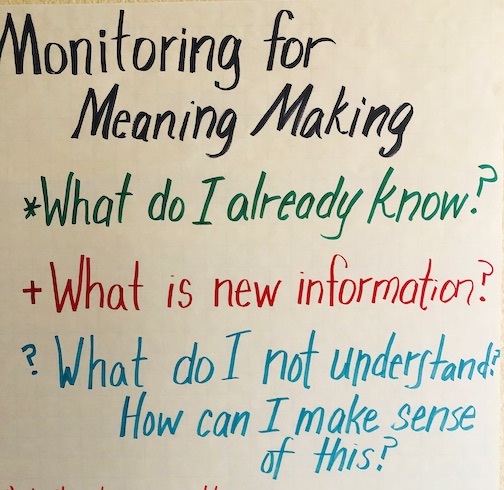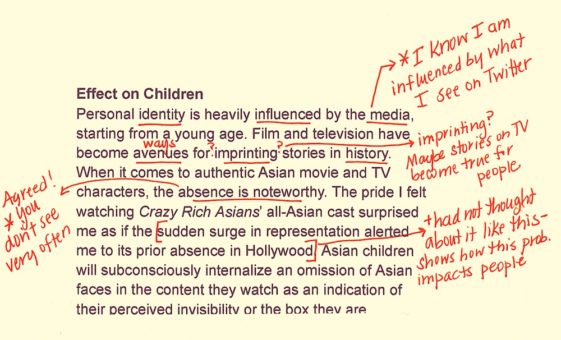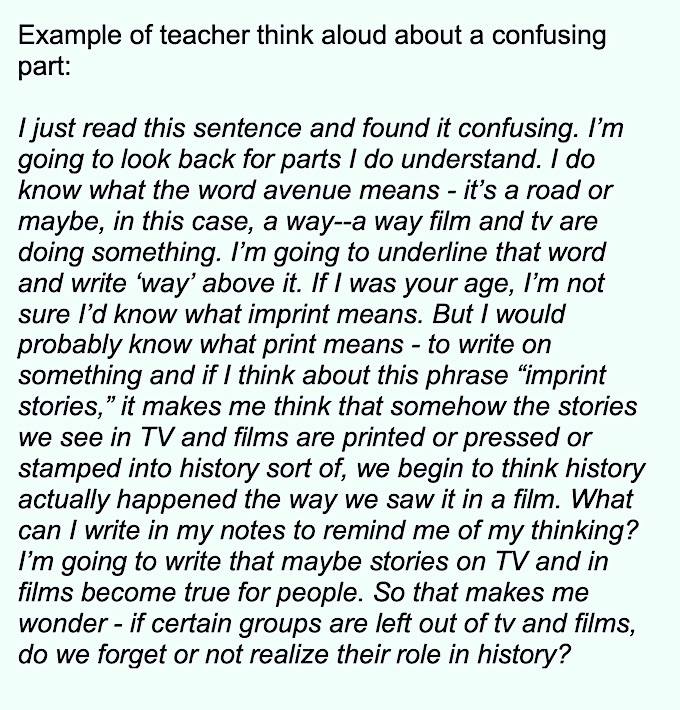3 Questions We Can Ask about Informational Texts
By Sunday Cummins
What do I already know?
What information is new?
Do I understand this information?
These are three questions we need to teach every student to ask as they make sense of informational sources. These questions serve as simple gateways to making meaning as we engage with nonfiction and information text.
They are also precursors to asking and answering higher-level thinking questions like What’s the author’s message? and Do I agree or disagree?
Check in with students for understanding
In my experience, as teachers we sometimes take for granted that students understand a source at a basic level. When we confer with a student, we jump to asking questions like, “What’s the author’s central idea in this part of the source?” or “What is the structure of this passage?” before we know for sure that the student understands what they have before them.
If we know a student well (as a reader) and know they have adequate skills to make basic sense of a source, then we can jump-start and ask those more advanced questions. If we don’t know this student as a reader – or we know the source is more complex than others they have read – start by assessing for “within” text understanding (Fountas & Pinnell, 2017).
A simple way to do that is to ask a version of these three questions:
- In this section (or part or sentence), what did you read about that you already knew?
- What is new information or information you did not already know?
- Is there any part (e.g., word, phrase, section) that seems hard to understand?
Then listen carefully and determine what to do next, which may include the following:
► If the student reveals they understand the content (at a literal or basic level), then ask a higher-level thinking question.
► If the student reveals a lack of understanding or clarity about the basic content, then move into a conversation that helps them make better sense of the basics.
► And if the student reveals they are not monitoring at all or that they don’t really know anything about what they have read, then engage in a conversation about how those three questions I shared above can be helpful in making meaning.
Model coding and noting for your students
Teach the students to jot a code (related to each question) and a quick note, either in the margins of the source or on a sticky note (Hoyt, 2008). The codes can be as simple as using an asterisk, plus sign, and question mark like the following:
* I already knew this.
+ This is new information.
? I don’t understand this.
Create an anchor chart or bookmark for students to reference like the one in Figure 1.
Be sure to model or think aloud about how you “code” and “note” a part of a difficult source. Post a section of a source for all students to view (with a document camera or smartboard) and, as you read aloud and think aloud, jot notes about your thinking.
Figure 2 offers an example of what this might look like. It’s part of an essay about Asian American representation in Hollywood that a class of 8th grade students read (Park, n.d.). The teacher chose this short, difficult section to model the coding process and her own thinking and annotation.
What to do when we don’t understand?
Many students find coding for “I already knew this” and “This is new information” to be very easy. Identifying what they don’t understand is harder. Students may feel vulnerable revealing what they do not understand, or they may not realize or notice that they do not understand something.
If a teacher models what you do when you don’t understand a part of the source (or when you had to think carefully to really understand), you’re making “not understanding” an acceptable part of the meaning making process.
What is critical is that you also model what you do to make sense of the hard parts. When you got stuck on that part of the source, what did you do? (Or if you were an 8th grader, what might you do?) Sharing how you strategically made sense of the hard parts opens doors for our students.
Figure 3 is an example of what a think aloud might sound like. As you can see, there is another important underlying question at play here: What can I do to make sense of this part?
Using the three questions in other contexts
Teaching students how to monitor for meaning by asking these three questions can be helpful in contexts beyond reading. Are your students making meaning from photographs or graphics? Teach them to ask these same questions:
What do I already know?
What information is new?
Do I understand this information?
During student-led conversations are students really making sense of what their peers are saying and responding in a constructive way? These three questions can serve to deepen that work as well.
In each of these contexts – from simply reading a source to analyzing a tricky infographic or sorting out a discussion – these three questions help students make sense of informational sources and the world around them.
Some students may already be thinking this way as they process the content in sources; others may need an instructional nudge. As these questions become automatic for students – asked and answered with hardly a thought – then asking and answering other higher-level critical thinking questions becomes easier.
A basic understanding of a source frees up cognitive room for the critical thinking we want students to do.
References
Fountas, I. C., & Pinnell, G. S. (2017). Fountas & Pinnell Benchmark Assessment System 2: Grades 3–8, levels L–Z. Portsmouth, NH: Heinemann.
Hoyt, L. (2008). Revisit, reflect, retell: Time-tested strategies for teaching reading comprehension. Portsmouth, NH: Heinemann.

Sunday is the author of several professional books, including her latest releases, Close Reading of Informational Sources (Guilford, 2019), and Nurturing Informed Thinking (Heinemann, 2018). Visit her website and read her regular blog posts on teaching information literacy. Follow her on Twitter @SundayCummins.






































